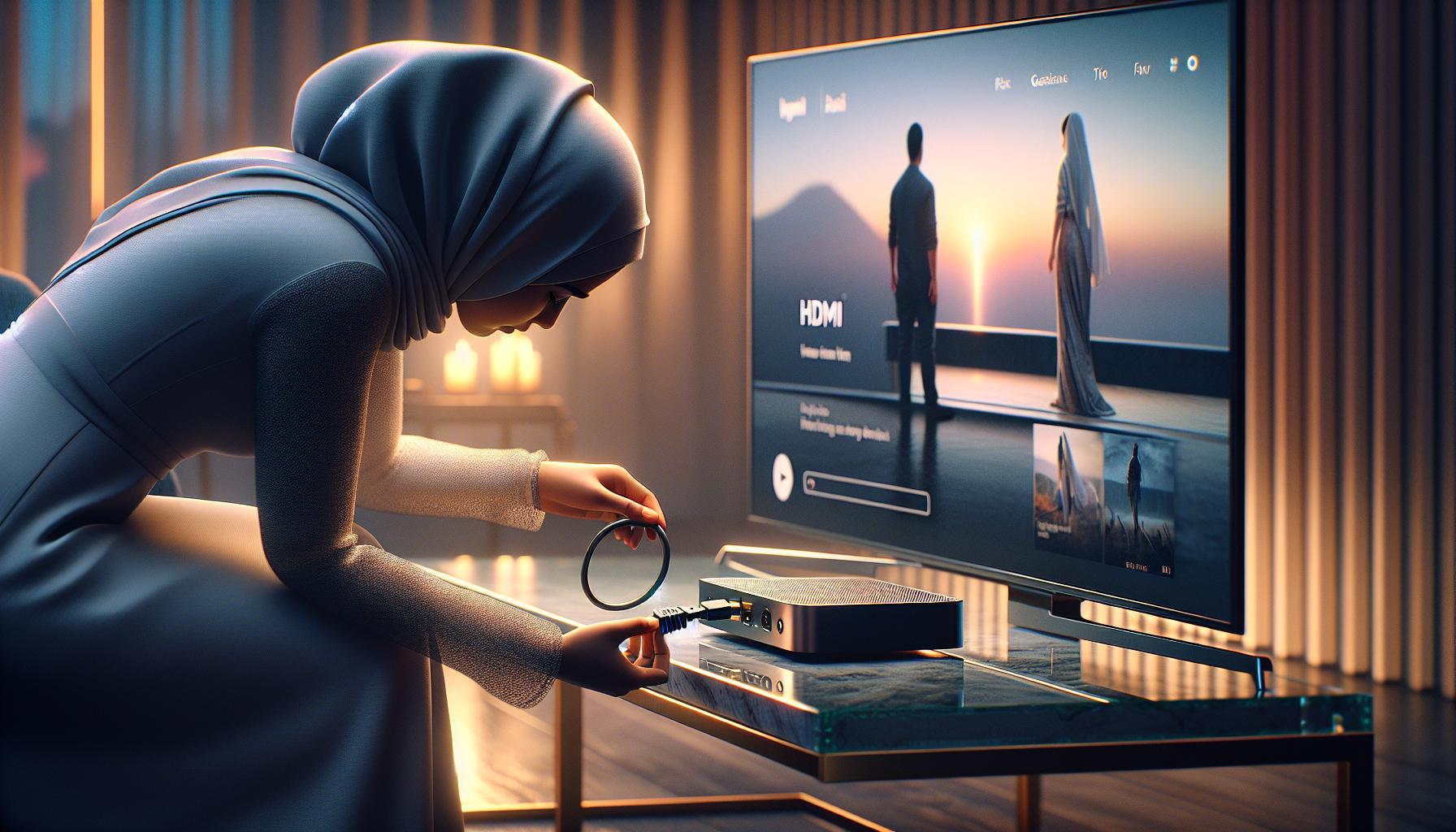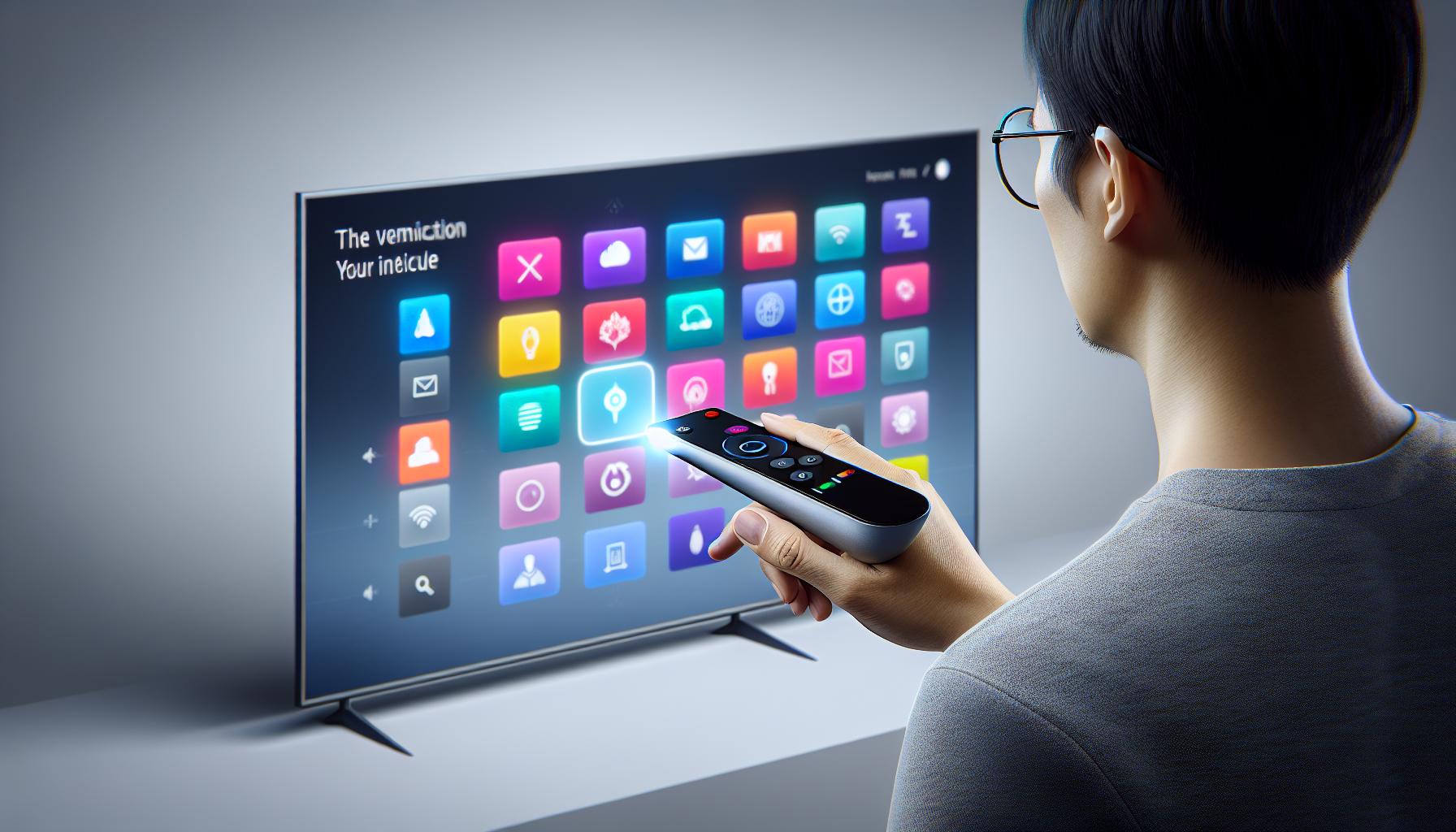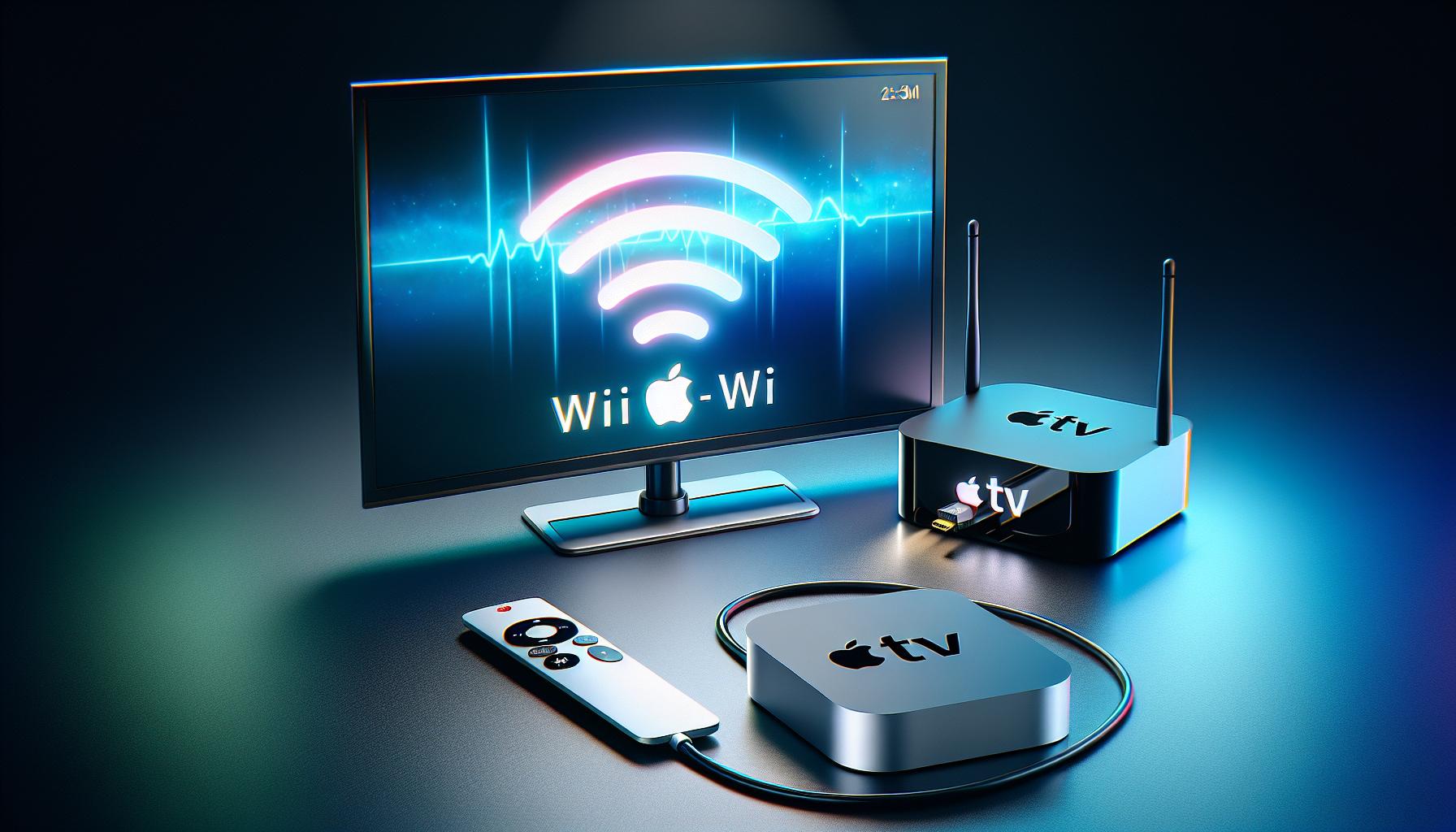Ever wondered how to get the most out of your sleek, high-tech Apple TV? You're in the right place. Setting up Apple TV isn't as daunting as it might seem. With the right guidance, you'll be streaming your favorite shows in no time.
In this guide, you'll learn step-by-step how to hook up your Apple TV, effortlessly. We'll walk you through the process, from unboxing your device to navigating the Apple TV interface. It's all about making your entertainment experience as seamless and enjoyable as possible.
Unboxing your Apple TV
Diving into a new product is always exciting, and your Apple TV is no different. As you open your Apple TV box, a sleek and compact device will greet you. Let's get you acquainted with what's inside the box.
First things first, you'll find the Apple TV unit itself. It's a small, black box with a glossy finish that packs a punch. It's built to deliver a world-class entertainment experience right to your living room.
Dig a little deeper, and there's your Siri Remote. It's not just a regular remote; it's your voice-activated assistant, game controller, and navigation tool all rolled into one. Siri Remote is your primary way of interacting with your Apple TV, making it as much a star of this unboxing show as the TV unit itself.
Next up, you have your power cord. It's crucial to give life to your turned-off Apple TV. Remember, the power cord is compatible with standard AC outlets, so you don't need any fancy adapters to get it working.
Then, you have your Lightning to USB Cable. This cord is used for charging your Siri Remote. It's a handy thing to have, considering you don't want your remote running out of juice in the middle of your favorite show, do you?
Also, keep an eye out for the Apple Stickers and Setup Guide. While the stickers might just be for a bit of Apple flair, you'll find the setup guide incredibly useful. It provides detailed instructions on how Apple TV works and how to set it up. So give it a once-over before moving forward.
Remember to keep everything safely until you're quite familiar with operating the Apple TV.
Now that you've got the lay of the land, let's deep dive into getting your shiny, new Apple TV up and running. Next up, we're going to guide you through the process of setting up your Apple TV and connecting it to your television display. So, keep scrolling to continue your Apple TV adventure.
Connecting your Apple TV to your TV

Setting up your Apple TV and connecting it to your television doesn't have to be a daunting task. With the right tools and instructions, you'll have it up and running in no time.
So grab your cable and let's dive right into the process.
Firstly, you need to ensure your television has an available HDMI port. HDMI (High-Definition Multimedia Interface) is most commonly used for high-quality digital video and audio. Have a look at the back of your television set, the HDMI ports are usually labeled 'HDMI'.
Once you've confirmed your TV has an HDMI port, it’s time to connect the HDMI cable. Plug one end of the HDMI cable into the back of your Apple TV unit and plug the other end into your television's HDMI port.
It's essential at this point to take note of the exact HDMI port number you plugged into on your television. This information determines which "input" setting you need to select on your TV to display your Apple TV.
The next step involves connecting your Apple TV to power. Using the power cord that came with your Apple TV box, connect one end to your Apple TV and the other end to a power outlet.
Your Apple TV is set up physically. It is time to switch your TV to the right input and boot up your Apple TV. Press the 'Input' or 'Source' button on your TV remote until you find the correct HDMI port number. Hit the 'Menu' button on your Siri Remote, and your Apple TV should wake up right away.
Finally, pair your Siri Remote with your Apple TV. Make sure that your remote is charged, and bring it near your Apple TV. It should connect automatically. If it doesn't pair automatically, press and hold the 'Menu' and 'Volume Up' buttons until your remote is paired.
By following these steps, you'll be connected and ready to enjoy the endless entertainment possibilities that come with an Apple TV. The process might seem laborious initially, but once completed, it delivers a seamless viewing experience.
Setting up your Apple TV
Now that you've got your Apple TV physically hooked up to your television, it's time to power it up and start the configuration process. Initiate by connecting the power cord to your Apple TV and then plug it into an available electrical socket. Once that's done, switch on your TV and set it to the correct HDMI port.
With the TV switched on, you'll likely spot an Apple logo on the screen, a telltale sign that your Apple TV is revving up. Post that landmark, a sequence to set up your Apple TV greets you. Here's how to navigate through these steps:
- Select your Language:
The Apple TV's setup guide will first ask you to pick your language. Use your Siri Remote to scroll through the list and select your preferred language. - Choose your Region:
Subsequent to language, you'll be directed to pick your country or region. By providing this information, your Apple TV customizes itself to display suitable content for your locale. - Connect to Internet:
After setting your language and region, your next task is to connect your Apple TV to the internet, via WiFi or Ethernet. By choosing WiFi, you'll find a list of available networks. Pick your network and type your password using the on-screen keyboard and the Siri Remote. Alternatively, if you select Ethernet, just ensure you've connected your Apple TV to your router using an Ethernet cable. - Enable Location Services:
Lastly, you'll be requested to enable Location Services. This is generally used for services like weather forecasts and movie showtimes. The selection is entirely up to you, and you have the liberty to enable or disable it.
Notably, during this setup procedure, you'll encounter options like 'Set Up with Device' and 'Set Up Manually'. If your iPhone, iPad, or iPod touch runs iOS 7 or later, 'Set Up with Device' can simplify the process. Yet if you prefer typing details yourself, 'Set Up Manually' is the one for you.
By meticulously following these steps, you'll successfully set up your Apple TV. Sit back, grab your Siri Remote, and plunge into the amazing world of entertainment that awaits.
Connecting to your Wi-Fi network
Once you've powered on your Apple TV and selected your language and region, it's time to get your device connected to the internet. A robust Wi-Fi connection is absolutely essential for a seamless viewing experience.
You'll find an option on the screen that says "Set Up Your Apple TV." Below that, you'll see "Connect to a network." Choose this option.
If you don't see the network you want to connect to, don't panic. Apple TV automatically detects the available Wi-Fi networks within range, so you might need to wait a moment as the list populates. You'll be presented with a list of available Wi-Fi networks to choose from.
Once you've located your network from the list, select it. It's at this point that you'll be asked to input your Wi-Fi password. Make sure you enter it correctly. Most passwords are case-sensitive, so take note of any upper or lower case characters.
If you're having trouble connecting, it's a good idea to double-check your Wi-Fi network's compatibility with Apple TV. Apple TV works best with networks that support either 802.11a, 802.11g, 802.11n, or 802.11ac protocols.
Luckily, most modern routers will support these protocols. But if your router doesn't, you might need to consider upgrading your router or using an Ethernet cable to connect your Apple TV directly to your router for the best streaming experience.
What if you're still having issues connecting your Apple TV to your Wi-Fi network after troubleshooting the potential problems? In such cases, you might want to consider contacting Apple's customer support. They have a knowledgeable and friendly team who can guide you through the process.
Remember, connecting your Apple TV to your Wi-Fi network is just a part of the setup process. Once you're connected, you'll be one step closer to being able to enjoy all the entertainment that Apple TV offers, from the comfort of your own living room. And isn't that the main goal?

Apple TV's navigation drills down upon simplicity and user-friendliness. With its sleek and minimalist aesthetic, it's no surprise if you find yourself instinctively figuring things out on your own. But there's more than what meets the eye, and to enhance your viewing experience, it's crucial you familiarize yourself with the television interface.
Firstly, your main navigation tool will be the Apple TV Remote. Chock full of hidden features and handy shortcuts, mastering your Apple TV remote is pivotal to make your viewing the most efficient it can be. Its primary functions include selecting options by clicking the touch surface, scrolling through menus by swiping across the touch surface, and going back to the previous screen with the Menu button.
Secondly, the Apple TV Home Screen is your jumping-off point for almost all the content available. It's divided into two main areas:
- Top Shelf: featuring quick access to recently used apps.
- Main area: displaying all your apps in a grid.
Here, you can navigate through your apps, select one, hold to rearrange, or press play/pause to get more options.
Next, deep within every app's surface, you'll find a structure - a hierarchy. This hierarchy consists of three main stages: Sections, Collections, and Items. The section is the top-level category. The collections are groups of items within a section, and items are the individual pieces of content.
Lastly, the Apple TV interface wouldn't be complete without a mention of Siri - your voice-activated personal assistant. Simply hold the Siri button and say what you want to find, open, or learn. Siri can even assist in answering queries about movies, weather, sports, and more.
By capitalizing on these features and steps, you'll find it easier to navigate your Apple TV interface. It might seem daunting at first, but after a few scrolls and clicks, you'll find yourself cruising through your favorite TV shows, movies, and apps.
Conclusion
You've now got the know-how to hook up your Apple TV and navigate its interface like a pro. Remember, a strong Wi-Fi connection is key to a smooth, uninterrupted viewing experience. Don't forget to familiarize yourself with the Apple TV Remote and Siri for easier navigation. Now, it's time to sit back, relax and enjoy the wealth of entertainment at your fingertips. From your favorite TV shows and movies to a myriad of apps, Apple TV brings it all to your living room. So, let the viewing party begin!
1. How do I set up my Apple TV?
To set up your Apple TV, first connect the power cord and switch your TV to the relevant HDMI port. Then, using your Apple TV Remote, you'll need to select your desired language and region, and connect to the internet.
2. Is a strong Wi-Fi connection necessary for Apple TV?
Yes, having a robust Wi-Fi connection is crucial for a smooth and efficient streaming experience on Apple TV. The article provides tips for troubleshooting any Wi-Fi issues that might arise during the setup process.
Navigation of the Apple TV interface involves understanding the layout of the Home Screen, the hierarchy of apps, and the utilization of Siri as a voice-activated personal assistant. The use of the Apple TV Remote is vital for the maneuver.
4. What happens when my Apple TV is finally connected to Wi-Fi?
Once your Apple TV is connected to Wi-Fi, you're all set to enjoy the plethora of entertainment that Apple TV offers including favorite TV shows, movies, and various apps.




